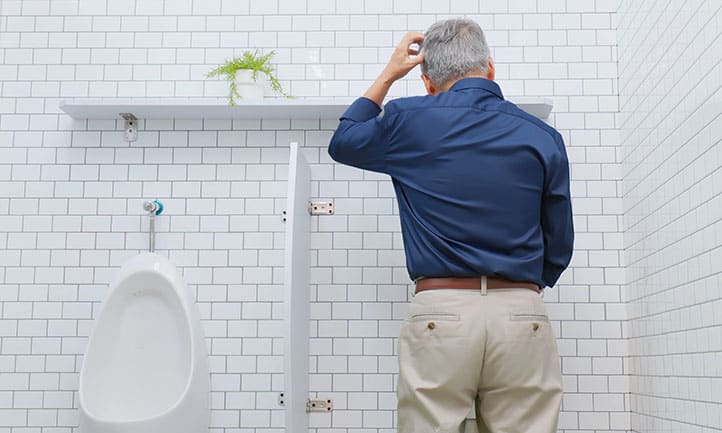BPH Treatments: Many Roads to Relief
By: Matthew Truesdale, MD, FACS

As men age, their prostate grows and they’re more likely to experience benign prostatic hyperplasia (BPH) – or an enlarged prostate. The prostate is a small gland that helps make ejaculate fluid. If the prostate grows too large, it can block the flow of urine out of the bladder.
BPH is one of the leading reasons men visit a urologist – 50% of all men experience symptoms from an enlarged prostate by age 60.
Waking up multiple times at night to go to the bathroom is one of the most common symptoms men describe. An enlarged prostate can also lead to difficulties urinating, such as a weak stream, having a stream that starts and stops, leakage, and the inability to completely empty the bladder.
Is it BPH?
If you suspect you have BPH, visit your urologist. It is essential for men experiencing BPH symptoms to seek medical advice from a urologist to rule out prostate cancer and prevent other conditions from developing.
While BPH itself is not cancerous, it can cause other health issues if left untreated, such as urinary tract infections (UTIs), bladder or kidney damage, bladder stones, or urinary retention.
A urologist can put you on the path to wellness through a few simple tests and completing an International Prostate Symptom Score (IPSS).
Many Paths to Relief
There are many different paths to try for relief of BPH symptoms. If one path doesn’t work, don’t give up!
A first step might be conservative or lifestyle modifications, including:
- Limiting beverages in the evening
- Limiting your caffeine and alcohol consumption
- Avoiding bladder-irritating foods
- Avoiding certain over-the-counter medications
- Changing your bathroom patterns
Another option is medication to relax the muscles lining the urethra in the prostate to open the channel and allow urine to flow better.
There are also many office-based and surgical options. Each method is minimally invasive and has its unique benefits. The UroLift® System, for example, uses a revolutionary approach to lift and hold the enlarged prostate tissue so it no longer blocks the urethra.
The Optilume® BPH Catheter System uses a drug-coated balloon inserted through the urethra into the prostate to release a safe and proven drug into the prostate.
Other surgical options remove the inside part of the prostate gland entirely using a variety of methods, from traditional surgery to laser vaporization and waterjet ablation.
Patient Navigators
With so many ways to treat BPH, it can sometimes feel overwhelming. At AUI, specialized providers are here to help you understand your diagnosis, discuss your treatment options, and help you relieve your symptoms of BPH.
Learn more about BPH, including its causes, risk factors, and treatment options. Find an AUI office near you.

